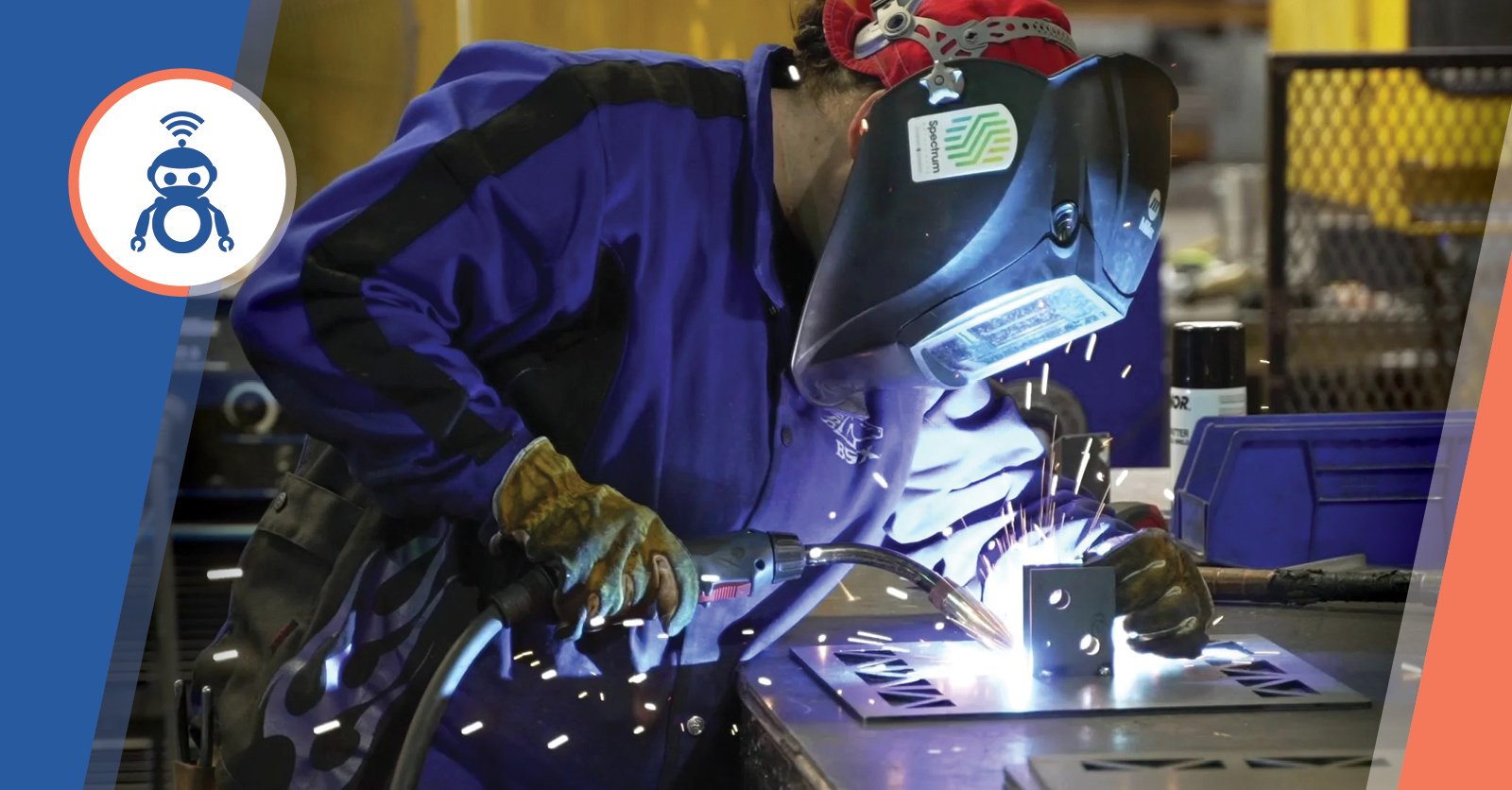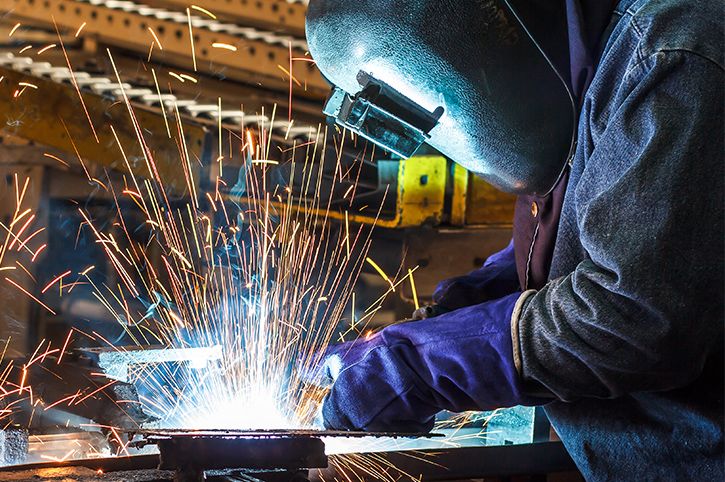Typical Welding Repair Issues and How to Address Them Effectively
Welding repairs usually encounter an array of issues that can endanger the integrity of the final item. Typical issues consist of insufficient penetration, porosity, and imbalance, among others. Each problem provides distinct challenges that need details methods for resolution. Comprehending these problems is necessary for welders aiming to boost their results and skills. This discussion will discover these usual welding repair work problems and reliable techniques to resolve them.
Insufficient Infiltration
Insufficient penetration happens when the weld steel falls short to totally fuse with the base material, causing weak joints and prospective architectural failings. This problem often stems from insufficient warm input, wrong electrode angle, or improper welding rate. Welders may run into insufficient penetration as a result of a mistake of the essential parameters for a details product thickness or kind. Furthermore, contamination on the base material's surface can impede effective bonding, exacerbating the issue. To attend to inadequate infiltration, welders should assure appropriate settings on their tools and preserve a tidy job surface area. Normal evaluation of welds is advised to recognize any type of shortages early, allowing for prompt modifications and the prevention of jeopardized architectural integrity in welded assemblies.
Porosity
Porosity is a common issue in bonded joints that shows up as small gas bubbles entraped within the weld steel. This flaw can compromise the stability of the weld, causing lowered strength and prospective failing under stress. Fabrication. Porosity commonly develops from contamination, moisture, or inappropriate welding methods, which enable gases to run away into the molten weld swimming pool. To deal with porosity, welders must ensure appropriate surface area prep work, maintain a clean workplace, and make use of appropriate welding specifications. In addition, choosing the right filler material and securing gas can reduce gas entrapment. Normal assessment and screening of welds can assist determine porosity early, assuring prompt rehabilitative actions are taken, thus protecting the top quality and dependability of the bonded framework
Imbalance
Misalignment in welding can occur from various elements, including incorrect configuration and thermal growth. Understanding the origin is important for effective resolution. Numerous modification methods are available to straighten elements and assure structural honesty.
Reasons for Imbalance
Welding misalignment commonly stems from a selection of underlying problems that can compromise structural integrity. One key reason is improper fit-up of elements before welding, which can cause gaps and unequal surface areas. Variants in thermal growth throughout the welding process can additionally result in distortion, particularly if the products being signed up with have various coefficients of growth. Additionally, poor fixturing and securing may fall short to hold elements firmly in position, resulting in activity throughout welding. Inadequately kept equipment, including welding makers and devices, may present variances in the weld grain, further adding to misalignment. Driver error, stemming from inadequate training or experience, can likewise play a significant duty in developing misaligned welds.

Correction Strategies Available
Resolving imbalance efficiently requires a combination of rehabilitative techniques customized to the specific concerns available. One common technique is the use of jigs or fixtures to hold elements in the correct setting throughout welding, making certain regular placement. In addition, preheating the products can assist minimize distortion and boost fit-up. For significant imbalance, mechanical realignment techniques, such as making use of hydraulic jacks or clamps, can be used to fix the placement before welding. Post-weld warmth therapy may additionally be required to relieve tensions caused by misalignment. Ultimately, careful examination and adjustment during the setup stage can stop misalignment issues from coming to be considerable problems, advertising a smoother welding procedure and improving overall structural integrity.
Distortion
Distortion is a common challenge in welding that can arise from various factors, including irregular cooling and heating. Comprehending the reasons for distortion is vital for executing efficient prevention strategies. Addressing this issue not just enhances structural integrity yet additionally enhances the total top quality of the weld.
Reasons for Distortion
When based on the intense heat of welding, materials usually go through modifications that can lead to distortion. This sensation mainly arises from thermal expansion and contraction during the welding process. As the weld area warms up, the material broadens; upon air conditioning, it contracts, which can create interior stress and anxieties. On top of that, unequal home heating across a work surface can intensify these anxieties, causing bending or bending. The sort of product also plays a substantial function; metals with differing thermal conductivity and coefficients of expansion might react in different ways, leading to uncertain distortions. Additionally, poor joint design and poor fixturing can add to imbalance during welding, boosting the probability of distortion. Understanding these causes is essential for efficient welding repair and prevention approaches.
Avoidance Techniques
Reliable prevention methods for distortion during welding focus on controlling warm input and making sure proper joint design. Keeping a regular warmth input assists to reduce thermal development and tightening, which can cause distortion. Utilizing methods such as preheating the workpiece can additionally minimize the temperature level slope, advertising consistent heating. Furthermore, choosing appropriate joint styles, such as T-joints or lap joints, can boost stability and lower stress concentrations. Implementing proper fixturing to safeguard the work surfaces in place better aids in keeping positioning throughout the welding process. Finally, staggered welding series can disperse warm much more equally, avoiding localized distortion. By applying these techniques, welders can considerably lower the chance of distortion and enhance the total top quality of advice their welds.
Breaking
Breaking is a common concern come across in welding repairs, often resulting from numerous factors such as incorrect air conditioning prices, product selection, or inadequate joint prep work. The occurrence of cracks can significantly endanger the honesty of the weld, causing possible failures throughout procedure. To address this problem, welders must initially assess the origin causes, ensuring that materials work and appropriately picked for the certain application. In addition, controlling the air conditioning rate throughout the welding procedure is necessary; fast cooling can induce stress and result in breaking. Appropriate joint design and preparation likewise contribute to lessening the danger. Executing these approaches can enhance weld high quality and resilience, eventually decreasing the probability of splitting in completed weldments.

Insufficient Blend
A substantial concern in welding repairs is insufficient fusion, which happens when the weld steel does not properly bond with the base material or previous weld passes - Belgrade Fabrication. This problem can bring about weak points in the joint, possibly endangering the stability of the bonded structure. arc welding for beginners Aspects adding to insufficient combination consist of inadequate warm input, incorrect welding method, and contamination of the surfaces being joined. To address this concern efficiently, welders should ensure proper pre-weld cleansing and surface area preparation, along with change their welding specifications to accomplish appropriate infiltration and blend. Regular inspection throughout the welding process can additionally help recognize insufficient fusion early, allowing for prompt rehabilitative steps to enhance the general top quality of the weld
Overheating
While welding repairs can enhance architectural stability, overheating presents a significant obstacle that can lead to product degradation. Extreme warmth during welding can modify the mechanical residential properties of steels, leading to lowered strength, boosted brittleness, and bending. This sensation is particularly critical in high-stress applications where architectural integrity is extremely important. Identifying overheating can involve visual examinations for staining or distortion, along with keeping track of temperature throughout the welding process. To alleviate the threats related to getting too hot, welders need visit the website to employ suitable strategies, such as regulating heat input, adjusting travel rate, and using appropriate filler products. Furthermore, applying pre- and post-weld warm therapies can help restore product residential properties and improve the total quality of the fixing, guaranteeing long-term efficiency and safety.
Regularly Asked Inquiries
What Are the Usual Signs of a Welding Problem?

How Can I Check My Welds for Top quality?
To test welds for quality, one can use aesthetic examinations, ultrasonic testing, and radiographic techniques. Each technique ensures structural stability, determines problems, and verifies adherence to specified requirements, eventually enhancing the reliability of the bonded joints.
What Security Preventative Measures Should I Take While Welding?
When welding, one ought to prioritize safety and security by using proper individual protective devices, guaranteeing proper ventilation, protecting flammable materials away, maintaining a tidy work space, and understanding environments to avoid injuries and mishaps.
Can I Repair a Weld Without Renovating the Entire Joint?
Fixing a weld without redoing the whole joint is possible, relying on the damage (Belgrade). Methods such as grinding, including filler material, or using a welding procedure can successfully attend to particular defects while preserving the bordering framework
What Tools Are Important for Reliable Welding Services?
Necessary devices for efficient welding fixings include a welding machine, cord brush, mill, protective gear, clamps, and filler materials. Each device plays an important function in making sure quality and security during the repair process. Porosity commonly develops from contamination, dampness, or improper welding techniques, which enable gases to run away into the molten weld pool. Inadequately kept equipment, including welding makers and devices, might present inconsistencies in the weld grain, additional contributing to imbalance. When subjected to the extreme heat of welding, products typically go through adjustments that can lead to distortion. Splitting is an usual problem come across in welding repair work, typically resulting from various elements such as improper cooling rates, material option, or poor joint prep work. A considerable problem in welding repair services is insufficient blend, which takes place when the weld steel does not effectively bond with the base product or previous weld passes.